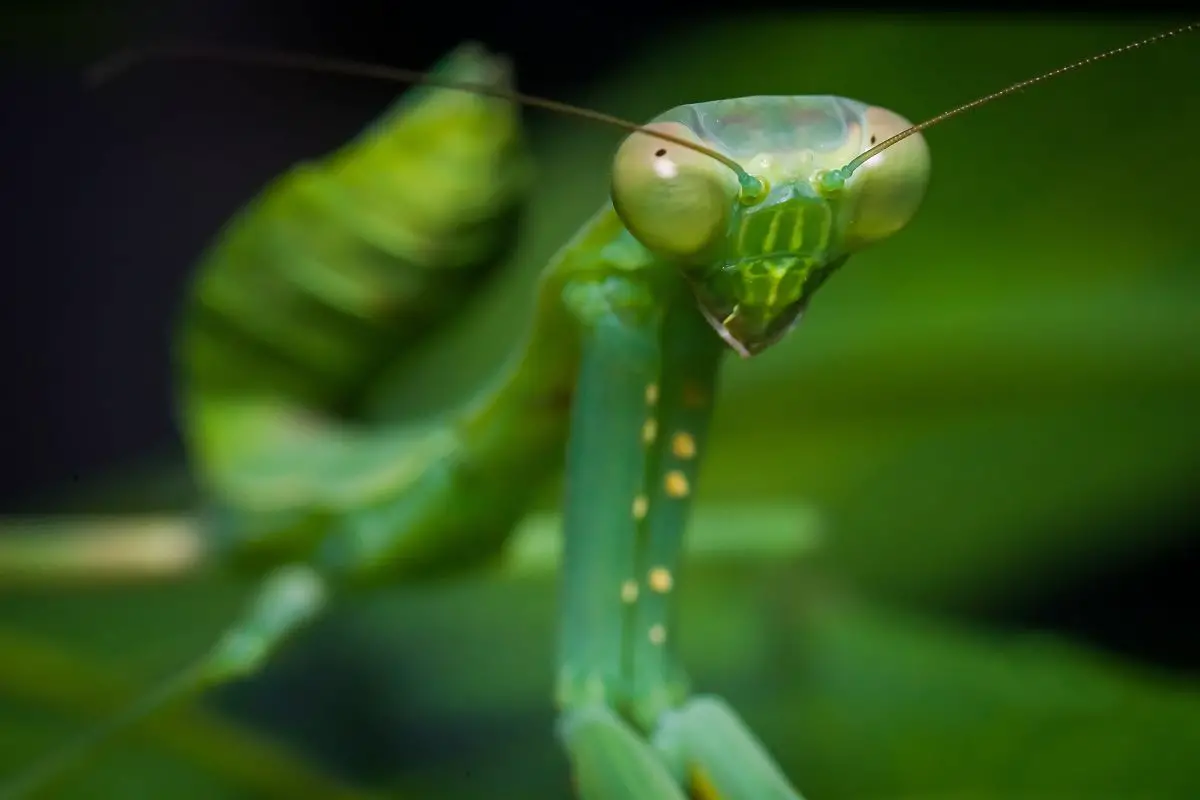
The praying mantis is a long and green stick-like insect with eyes that bulge and a geometrically shaped body. The head is shaped like a triangle, and the body is long and green. The front legs are claws and are used for grabbing prey and food, and are close together to look like they are praying.
These structures and coloring are what set the praying mantis apart from other animals. The praying mantis is green in color for camouflage purposes, but it can also be brown. Although it is a very distinct shape and color, there are still some insects that are very similar to it in shape and size.
This insect is a carnivore that does bite and sting, and it can be as long as six inches long in some occasions. It travels alone, and sits in wait, expecting its prey to arrive to it so that it does not have to hunt and forage for its own food. What the praying mantis is looking for are crickets, grasshoppers, and moths, and other insects such as that to survive.
The life cycle of the praying mantis is longer than some insects, and it can live from four to six days to four to six weeks, with its size being a determining factor here.
1. Stick insects are very similar to the praying mantis in appearance and have a longer life
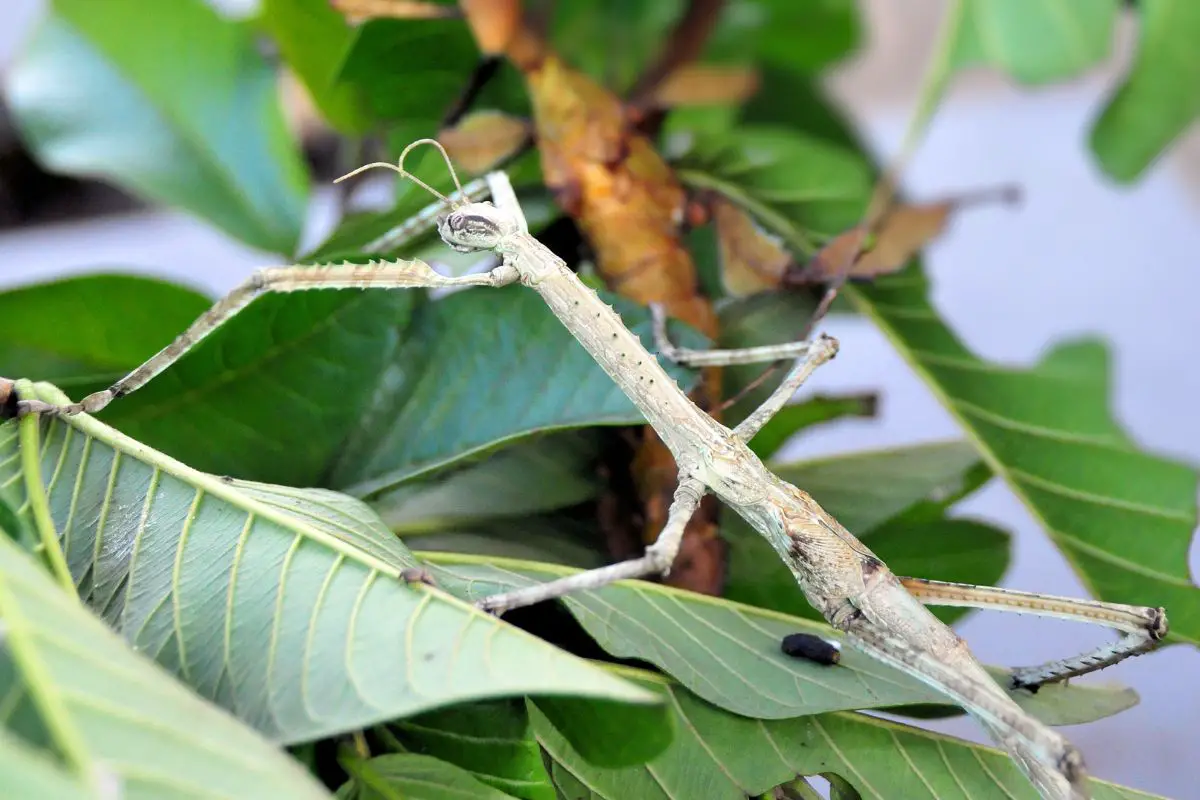
The stick insect looks very similar to a praying mantis, and is long and stick-shaped, and the same color as a praying mantis. The stick insect however does not have the long pointy claws in the front of its body like the praying mantis, and this could be the easiest way to tell it apart from the mantis. The stick insect may be difficult to see anywhere, as it will camouflage itself against the plants that it wants to crawl on.
The stick insect can grow from one to 12 inches and it has a lifespan that can last up to two years. These insects are most commonly found in tropical regions, and they like to live in grasslands where they can blend in with the scenery. They are largely plant eaters and will stay in regions where they can get as much of that as possible.
2. The green cricket may mimic the shape and size of the praying mantis but is much more harmless
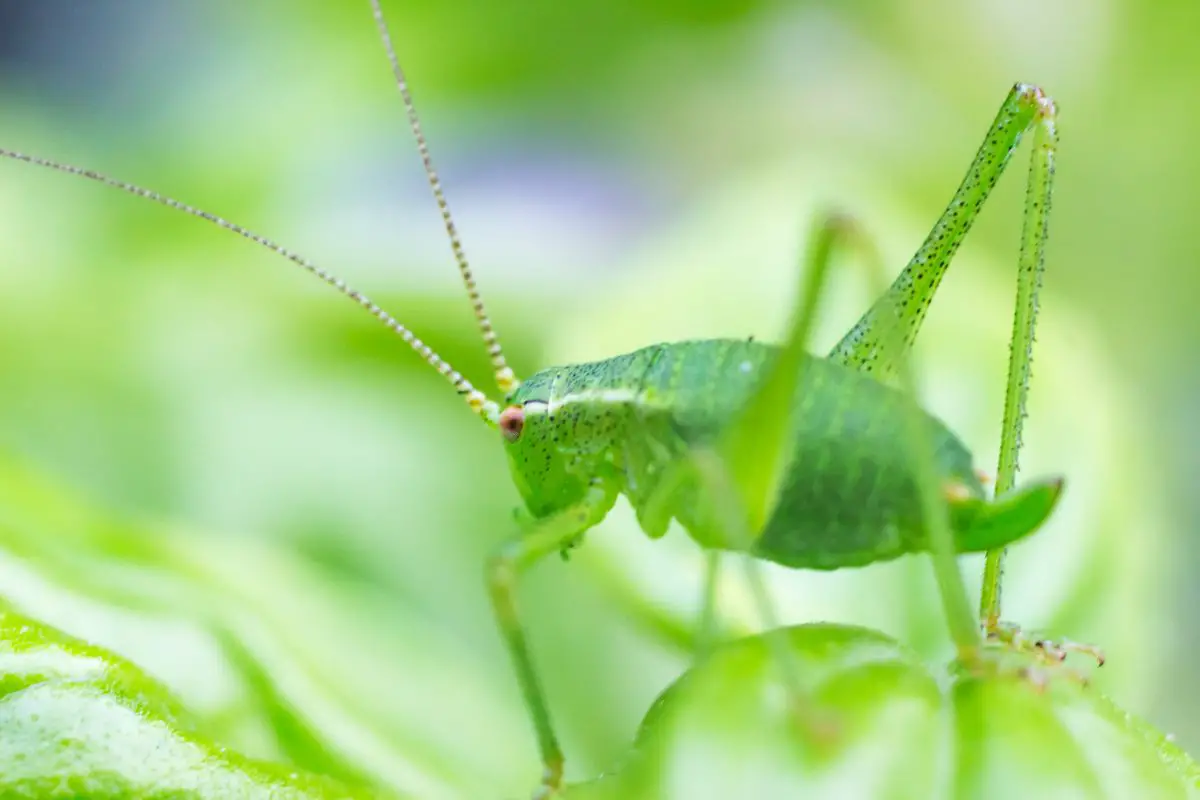
The green cricket or snowy tree cricket can sometimes be confused with the praying mantis. This is an insect that has a size that can go from one-tenth of an inch to two inches in length. These crickets are commonly found in trees, but can also be found in pastures.
They have similar hind legs to the praying mantis, but make a noise with their legs when their legs are rubbed together. The shape of the tree cricket is a little different than the praying mantis. The body is wide but small, and the antennae are longer.
The head of this cricket is longer as well, but they do not have a triangle shaped head like the praying mantis does. Its neck is long and it can turn at 180 degrees. The lifespan of the cricket can range from six weeks to three months if it finds the right habitat to feed off of plant vegetation in.
3. The katydid is an insect often confused with the praying mantis, but not as dangerous
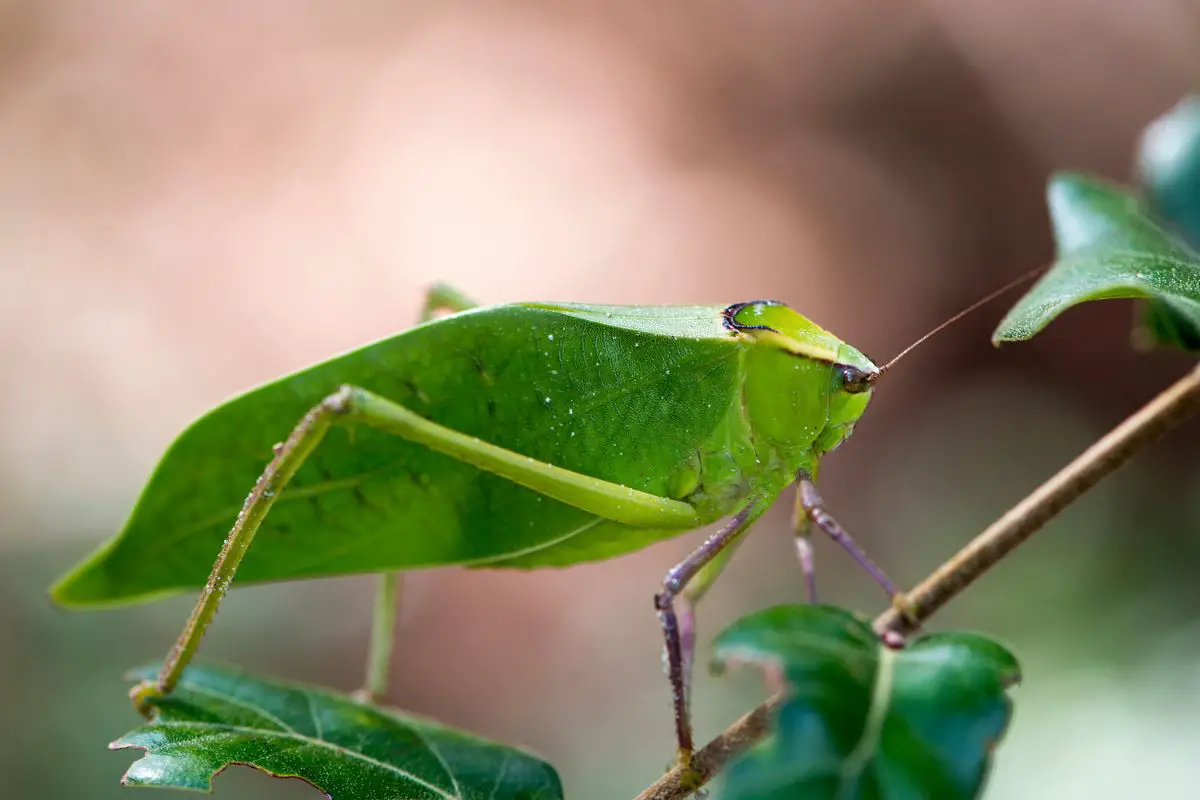
A run-in with a praying mantis is a day you won’t soon forget, but it’s not the same thing with a katydid. The two insects definitely look very similar though. The katydid is a species that looks like a cross between a grasshopper and a praying mantis.
It is as friendly as a grasshopper might be. It has a large green head, green legs, and its wings lie flat against its back. The size range of the katydid can vary, and will be largely dependent on the region or habitat it is in.
If the katydid is unable to get plant food, it can remain small and as small as one-quarter of an inch. When well fed, the katydid can reach up to several inches in length. A humid environment is one that this insect prefers.
This is a nocturnal insect so you likely won’t see it too often. The lifespan is longer than a praying mantis, and it will not live longer than one year in most conditions.
4. The green mantidfly is not as scary as the praying mantis but looks a lot like it
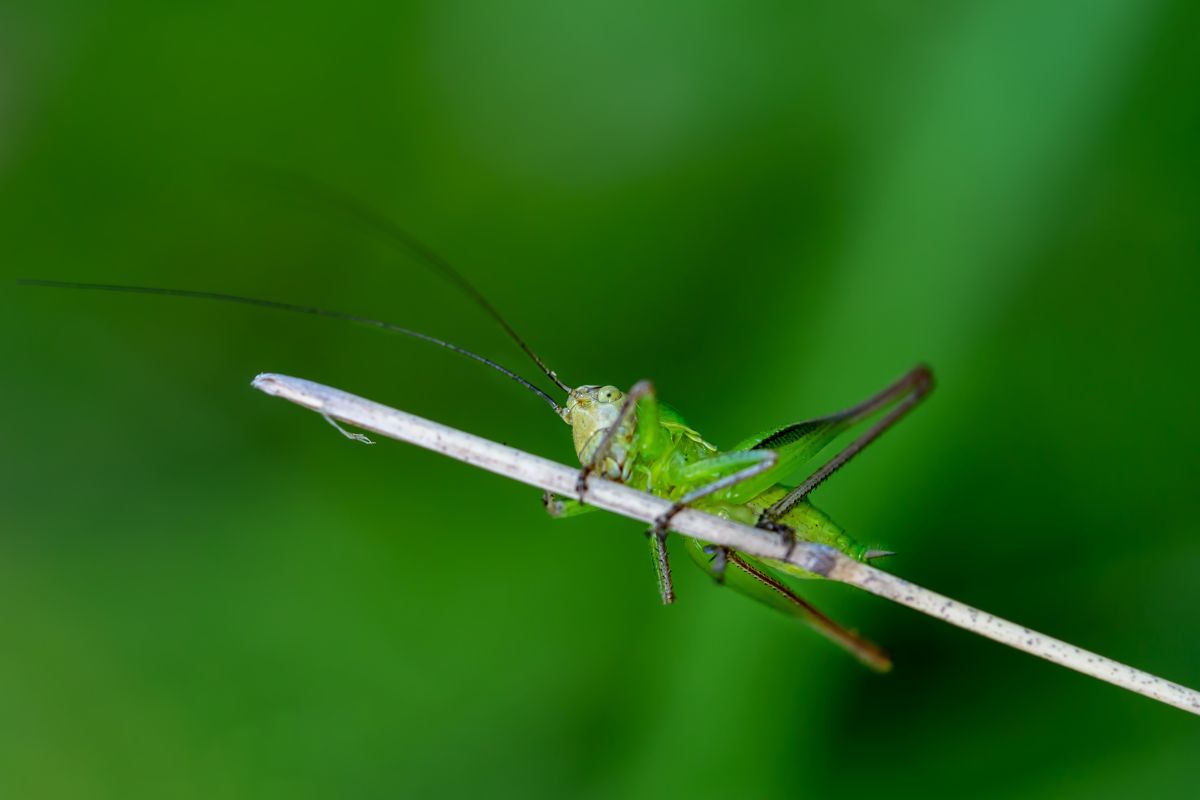
The green mantid fly is a unique insect in that it marries the body forms of a praying mantis and a green fly. It is green in color most of the time but it can also be brown or yellow, like the praying mantis. This is a fly that even has similar front claws, though they aren’t as large or ferocious looking as the praying mantis.
The mantis fly can grow to be up to two inches long, and live for several weeks.
The mantis fly prefers tropical regions and vegetation to feed off of. It is also a nocturnal insect and it prefers tropical regions. These flies are rarely seen elsewhere, or at all, given their nocturnal nature.
5. The grasshopper looks like the praying mantis and is much smaller
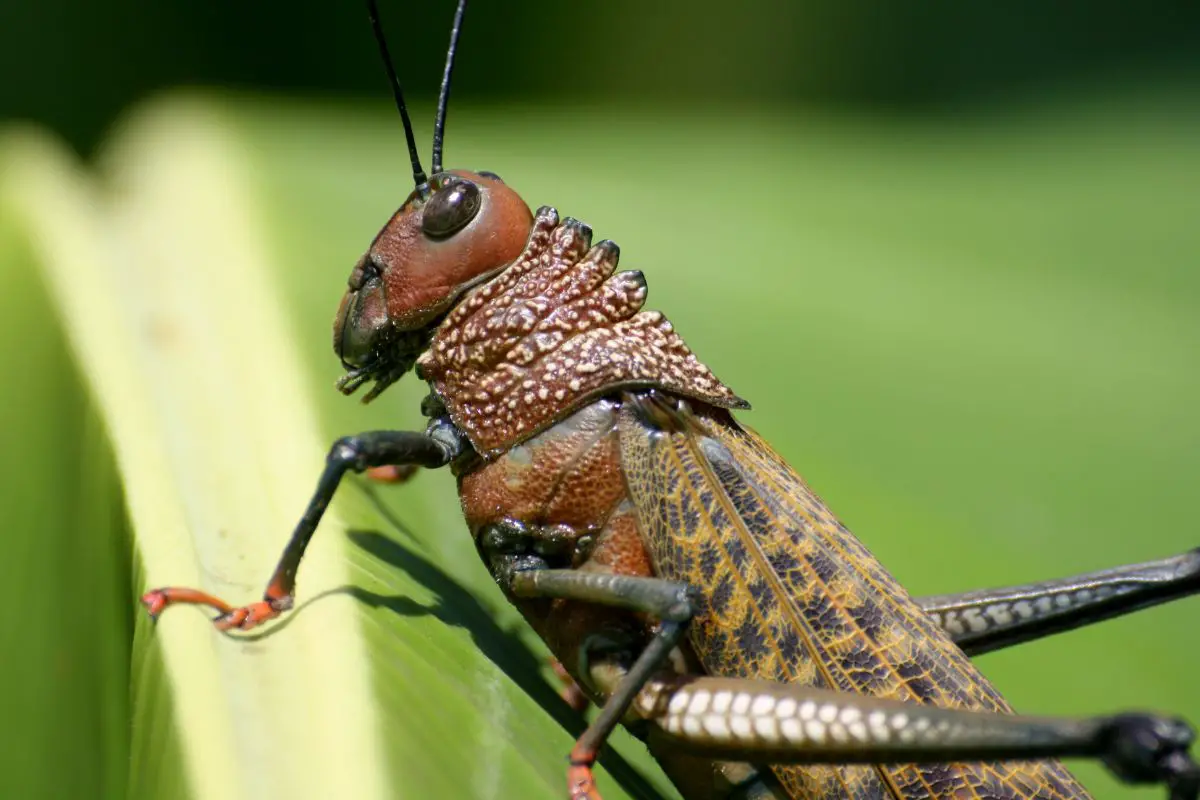
The grasshopper is an insect that looks very much like the praying mantis but is smaller in length. It is often green in color like the praying mantis but is shorter and approximately two to four inches in length most of the time. The grasshopper also varies in diet from the praying mantis, and is typically a plant eater and even plant dweller.
Vegetation is the habitat preferred by the grasshopper who typically enjoys a life span of approximately one year under the right conditions. Another key difference between the grasshopper, and many insects, and the praying mantis, is that the grasshopper has wings. The praying mantis does not.
The praying mantis is a hopper, whereas the grasshopper can fly away if it wants to, even if it jumps as well.
6. The flower mantis is a pretty and dainty version of the larger green praying mantis
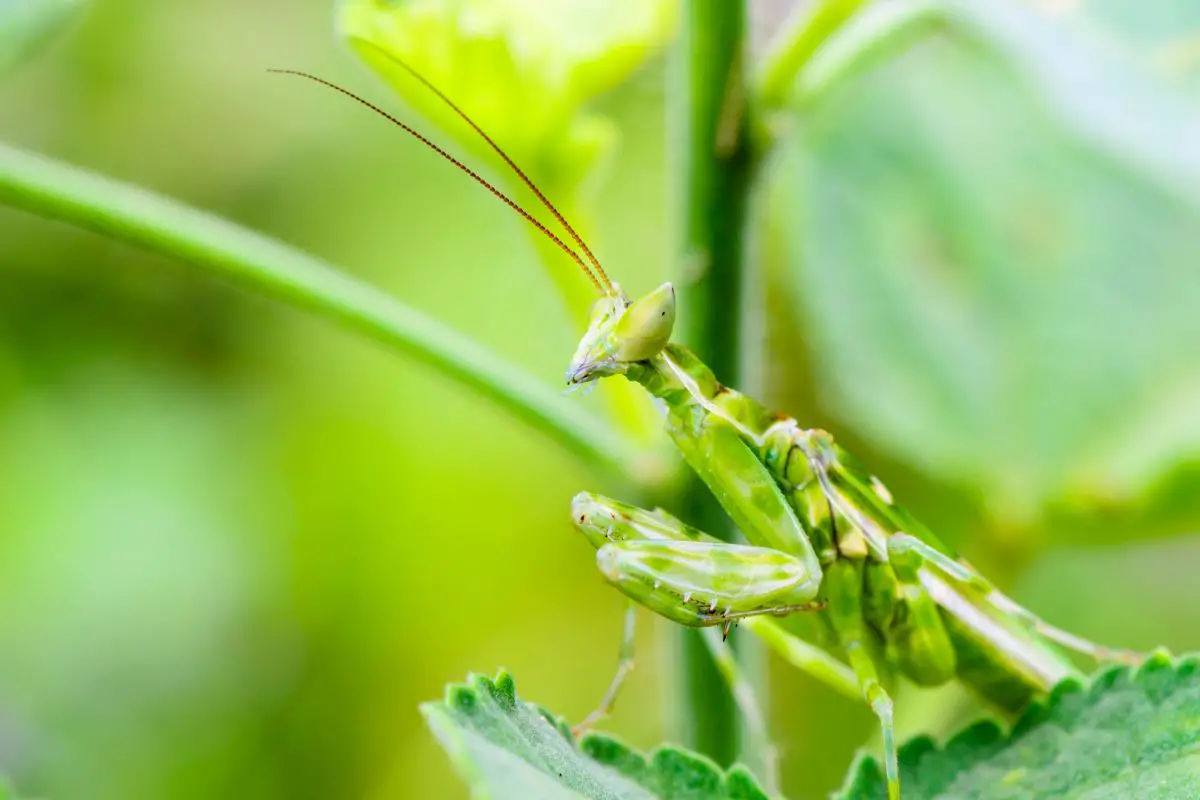
The flower mantis is an insect that is in the same family as the praying mantis, but is its own species. It prefers warmer and more tropical regions and is common in Western Africa. It likes to live in forests and woods, and as its name implies, it feeds off of vegetation.
It looks very much like a praying mantis but is smaller in size, being only one or two inches in size. The flower mantis is pink in color, and are not nocturnal insects. They may not blend in with vegetation the way a praying mantis does, but they will have a very strange sense of mimicry that enables them to avoid being eaten by insect-eating animals.
They like to sit on flowers and wait for insects to come by so they can enjoy them for their own diet. The flower mantis can survive for five to six months this way.
7. The giant prickly stick bug is freakishly scary looking, but will not bite or sting

The giant prickly stick bug is covered in thorns and is a large brown stick-shaped bug whose body curves in different directions. This look of the bug is for camouflage purposes so that the bug looks like a stick or natural piece of woodland. It is also covered in tiny thorns that make the bug more scary and imposing looking.
However, unlike the praying mantis, the bug is harmless. It will not bite or harm humans, and does not want to. The bug does look oddly shaped and it mimics the look of a mantis in some respects, and as some praying mantises can be brown, can be confused for one.
It can grow as long, being up to eight inches in length. If it feels threatened it will stand up, almost like a praying mantis, and its sharp spines can be effective. If you see its wings flapping, it is trying to startle a predator.
So, although the prickly stick bug does not want to hurt humans, still best to stay away from it.
8. The giant spiny stick bug is prickly and scary looking, but not aggressive
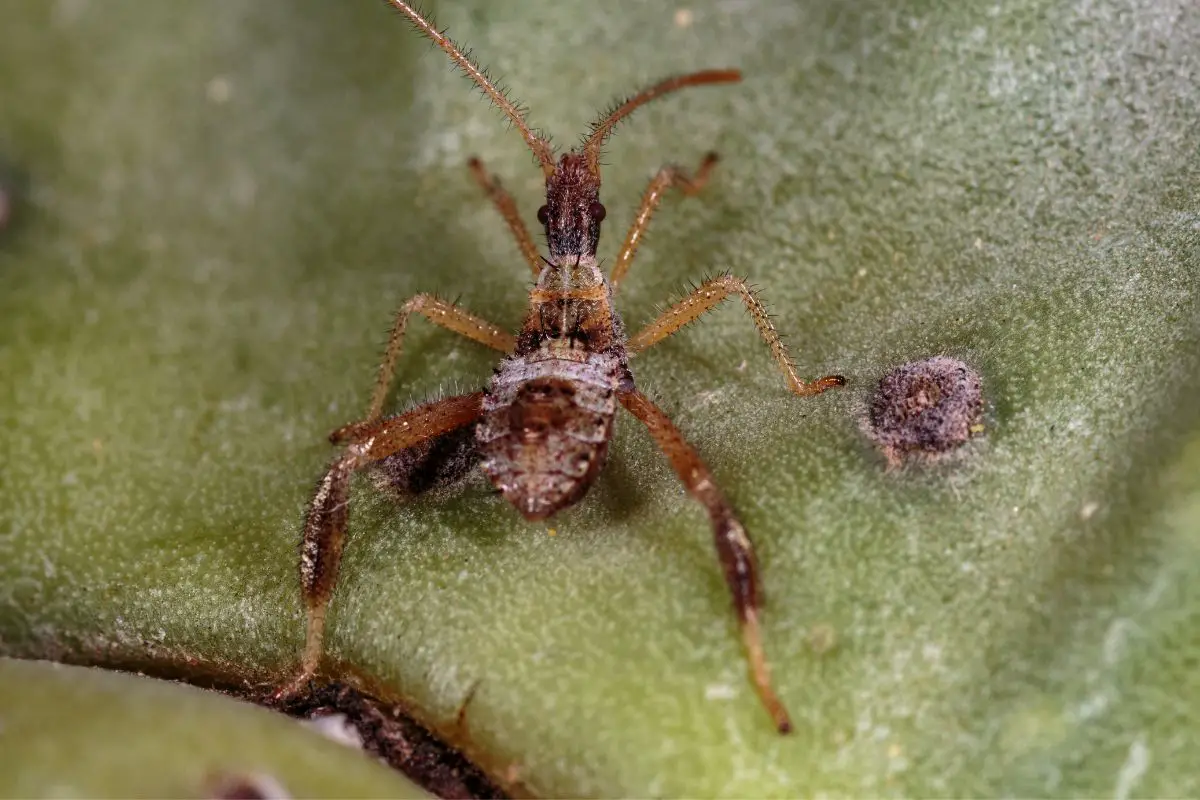
The giant spiny stick bug is a prickly stick-shaped bug that can be as scary looking as the praying mantis. This bug is brown and resembles the brown-colored praying mantis, but is covered in prickles and spines that could harm. Still, this insect is not an aggressive bug with humans.
It is very long however, hence the name giant, and it can be as long as 10 inches long. The shape of this bug allows it to camouflage. The males will have more spines, and longer ones, than the females will.
They are a darker colored brown than other stick bugs, but their size will differentiate them. The diet for this bug is forest leaves, and, unlike the praying mantis, it can live in a plant or woodlands habitat for up to two years.
9. The Malaysian leaf bug will blend in with its surroundings and is relatively harmless
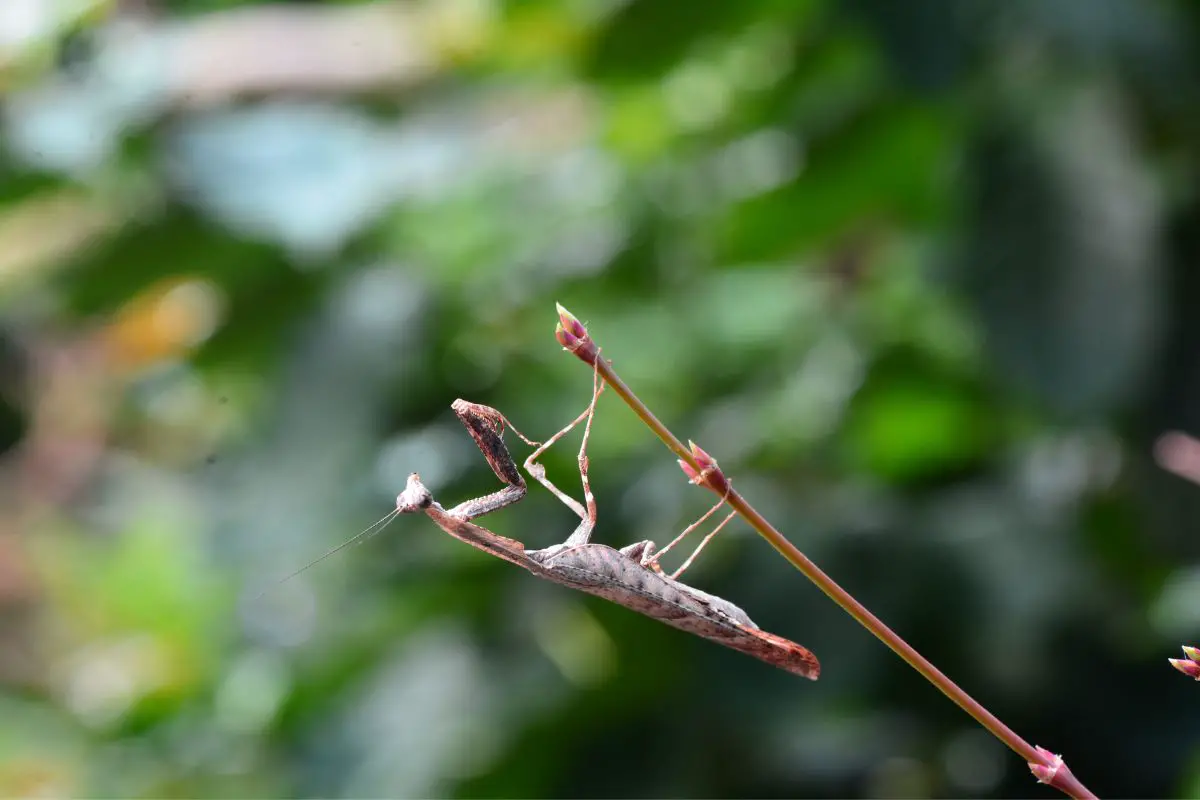
The Malaysian leaf insect is another stick like or mantis like insect that looks very much like a praying mantis in some respects. This is a green insect that likes the forests and blends in with the forests, and looks like brown leaves on a tree. They like to live or sit on the leaves of a tree, and if it blows back and forth they are able to stay on it as a result of the strength in their hind legs.
These can be fairly large insects, and reach up to four inches long. They are typically found in Malaysia or the Asian tropics, where they eat plants. It is almost hard to tell this bug apart from a green leaf, but if you look closely you can see it.
You may even see a leaf that looks layered, and chances are, there is a leaf bug sitting right on top of it. The lifespan of this bug can be up to one year, but they will last longer in captivity if fed or maintained under the right conditions.
10. The Malaysian walking stick is the same color as the praying mantis but does not have the raptor like claws
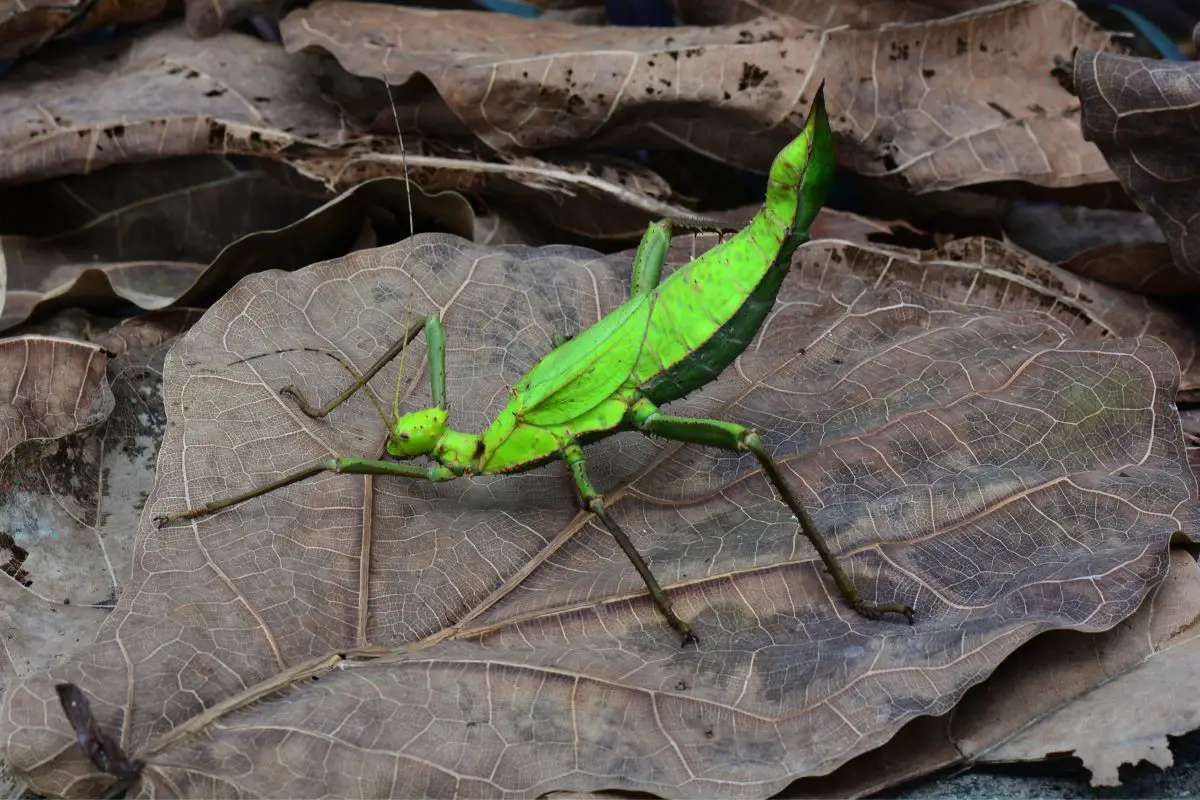
The Malaysian walking stick bug is very similar in shape and color to the praying mantis, and is typically a bright green color. It is also the same length, and can be anywhere from two to four inches long. The lifespan of the Malaysian walking stick is also very similar, and in the wild they can last up to one year.
They are most commonly found in Malaysia, and other southeastern parts of Asia. These bugs look very much like a praying mantis, but also like a leaf bug in a way, although the leaf design on their body is not as pronounced as the leaf bug. The diet is mainly vegetation but they will eat smaller insects.
Another name this bug goes by is the jungle nymph, as that is where they are most commonly found. Some can spray a chemical when they feel threatened, and others can feel prickly to touch. Overall, there is not a serious harm from these bugs though, unless you are its prey.
11. The Peruvian firestick is an insect that is hard to mistake in the wild
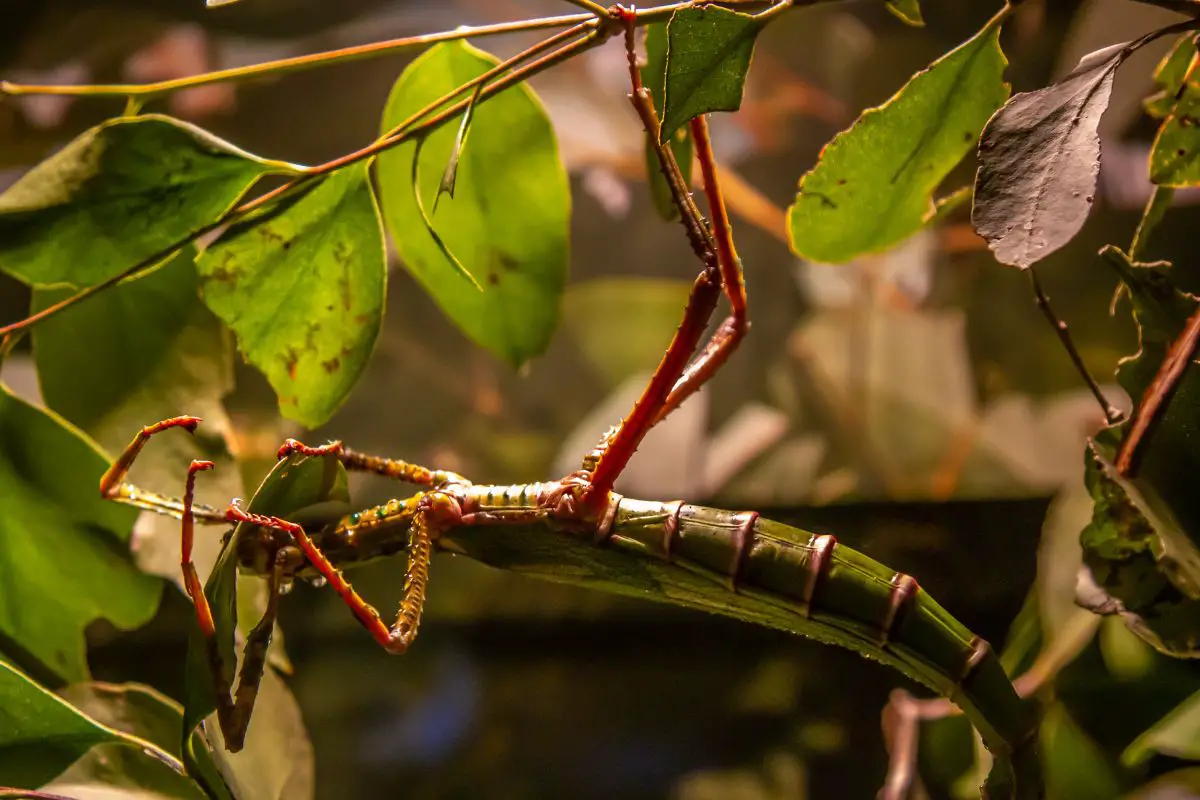
The Peruvian firestick is an insect that is very similar to the praying mantis in terms of its long spindly legs and its long body, but that is where it ends. This bug is red in color and lives primarily in the tropical rain forest, where it feeds off of other insects and vegetation. This insect can grow to over one foot long in the right conditions, but is typically just over six inches long.
This is not an aggressive insect and will send off a foul scent if it feels like it is being attacked. The scent is also a body fluid, so this is enough for this stick bug to get people or other creatures to leave it alone. The lifespan of this bug is one year but it can be longer, particularly in captivity by the bug enthusiast.
12. The assassin bug is named after its propensity to attack prey with some serious aggression
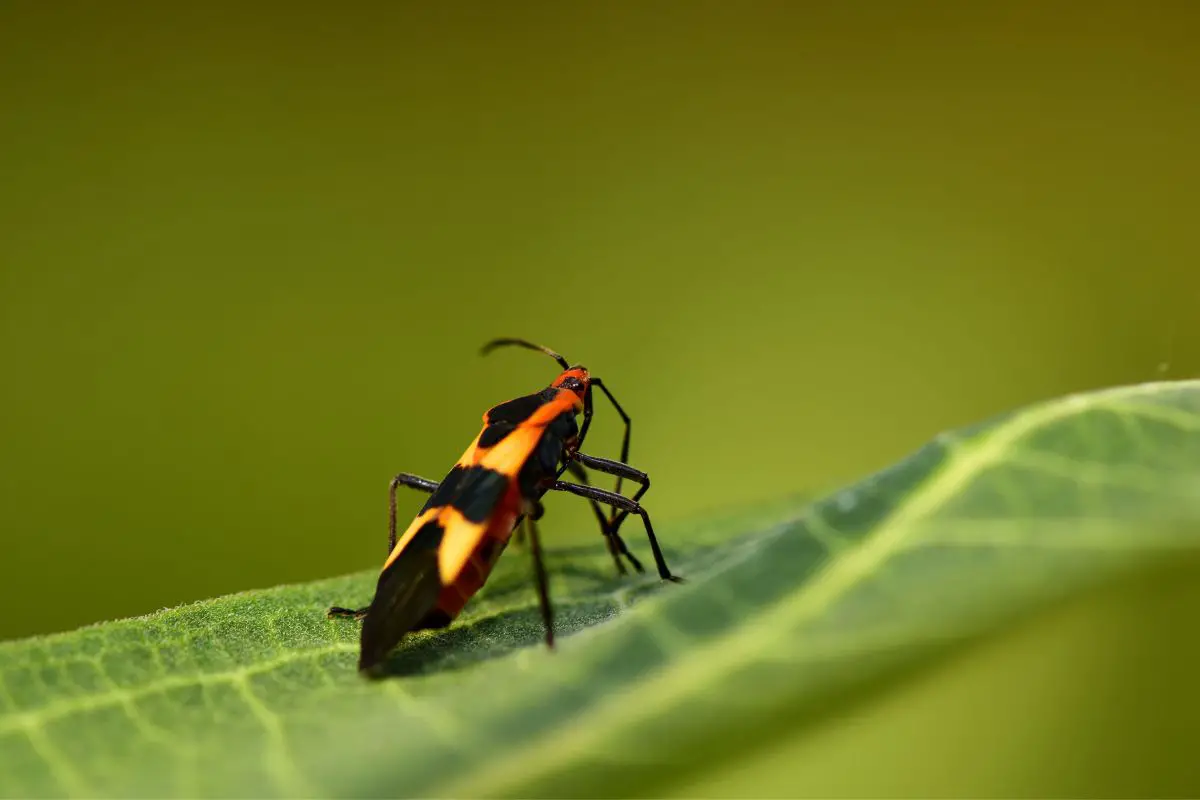
The assassin bug has a name to fear, and it is a name that is worthy of how the bug rolls. The assassin bug can kill, and it is responsible even for as many as 12 thousand human deaths a year. It has a poison that it secretes when it bites, and this can cause Chagas disease which is what leads to fatality after a bite.
There is a very large fang underneath the head of the assassin bug, and this can be harmful to humans, much like the claws of the praying mantis in the front can. It is similar to the praying mantis in color when it is brown, and just as imposing looking. This bug can be found in North America.
You might see it in a garden. It is brown on occasion and brown and red in some areas, and can be up to 6 inches long. The diet is largely plant-based, and the lifespan is from six to 12 months long in the wild.
13. Ambush bugs look like little grasshoppers but they are not as friendly, as their name suggests
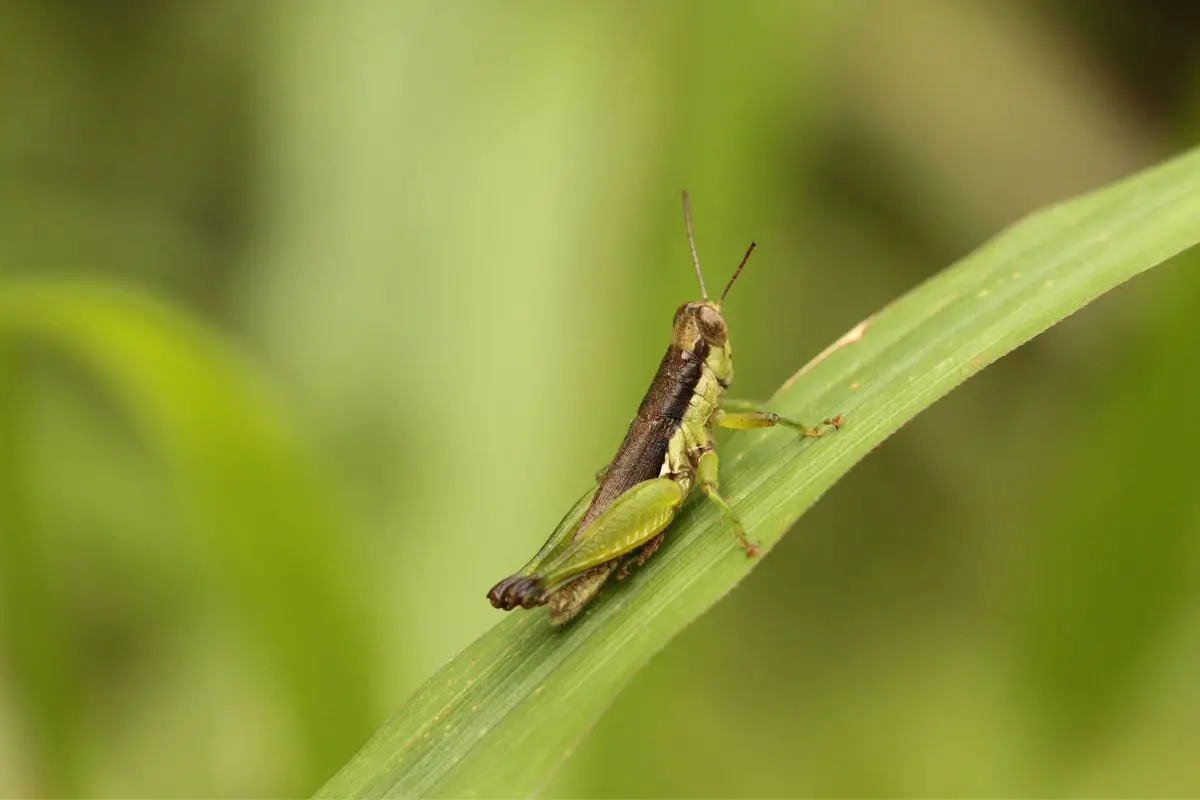
The ambush bug is a bug that looks very much like a little grasshopper, but it has some similarities with the praying mantis. The ambush bug is approximately the same length as a praying mantis, and can be as long as three to five inches long. The body like the praying mantis is angular in shape, and can be either green or brown like the praying mantis.
These are bugs that can and will bite you, and are best to be managed carefully, or not at all. They like their plants and are happy to feed off of plant life or other insects. There is a distinct saliva they inject into their prey that can be toxic but not deadly to humans if they are bitten.
These bugs are very common in all three countries in North America and across the world.
14. The aphid is more a plant problem than it is to anything else, but still a problem nonetheless

The aphid is a common houseplant or garden plant problem, and looks like a tiny version of a praying mantis. This bug is also known as plant lice. The bug is very tiny, and less than one-sixth of an inch long, but it can resemble a tiny praying mantis in some respects.
This is a biting insect, as it is known to destroy plants and crops, but this is not a biting insect to humans. This bug also has a lifespan of up to 25 days which is considerably shorter than the praying mantis in most cases. The diet of the aphid is plants, and they survive by sucking the plants of their sap until the plant dies, or gets close to it.
Plants are in danger when aphids are around.
15. The green lacewing looks like a cross between a praying mantis and a dragonfly
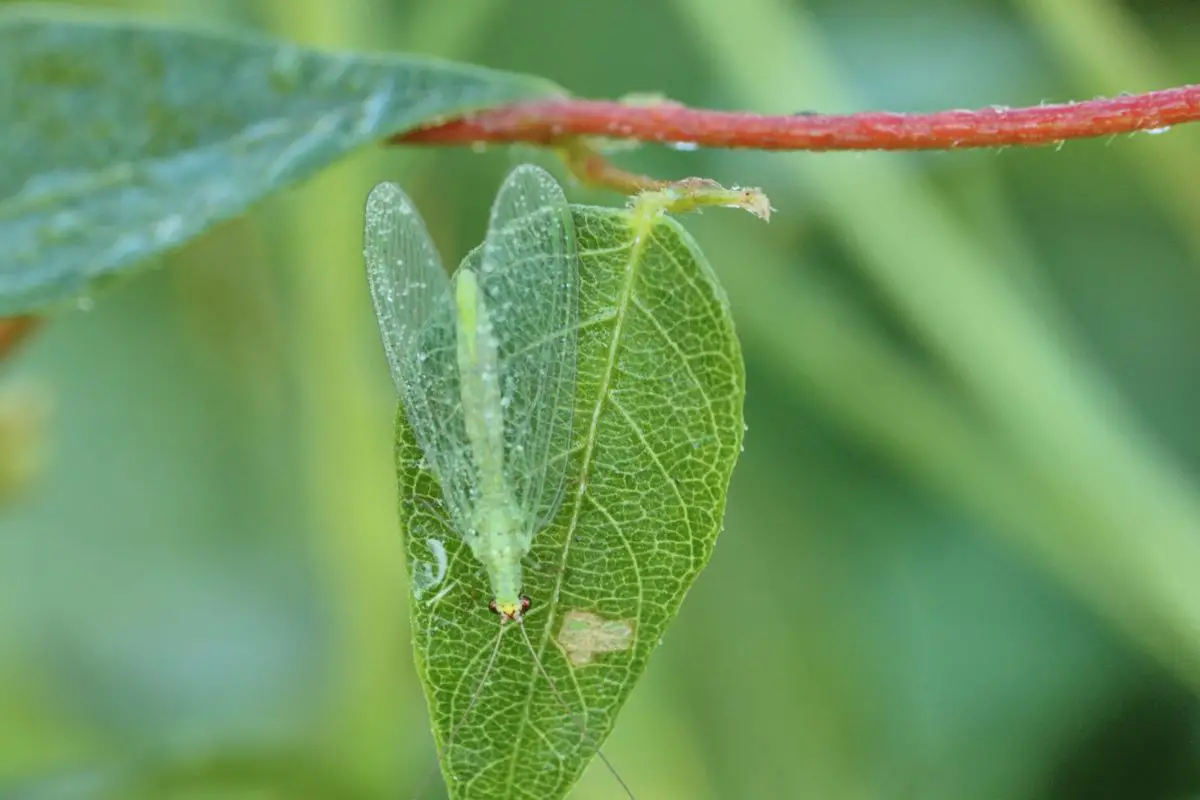
The green lacewing can be quite stunning, and it earns its name from the large wings over the back of its body. These wings are longer than the body itself, and almost mimic the wings of a dragonfly. The green lacewing looks like a cross between the praying mantis and the dragon fly as a result of these lovely wings.
This bug likes to eat other insects and even mites, and is much smaller than the praying mantis, usually at three-quarters an inch long. Their lifespan is much like the praying mantis however, and ranges between four to six weeks. The green lacewing is not a dangerous bug, but it can bite mildly.
This is not going to be more than a minor skin irritation, less annoying than a mosquito bite.
